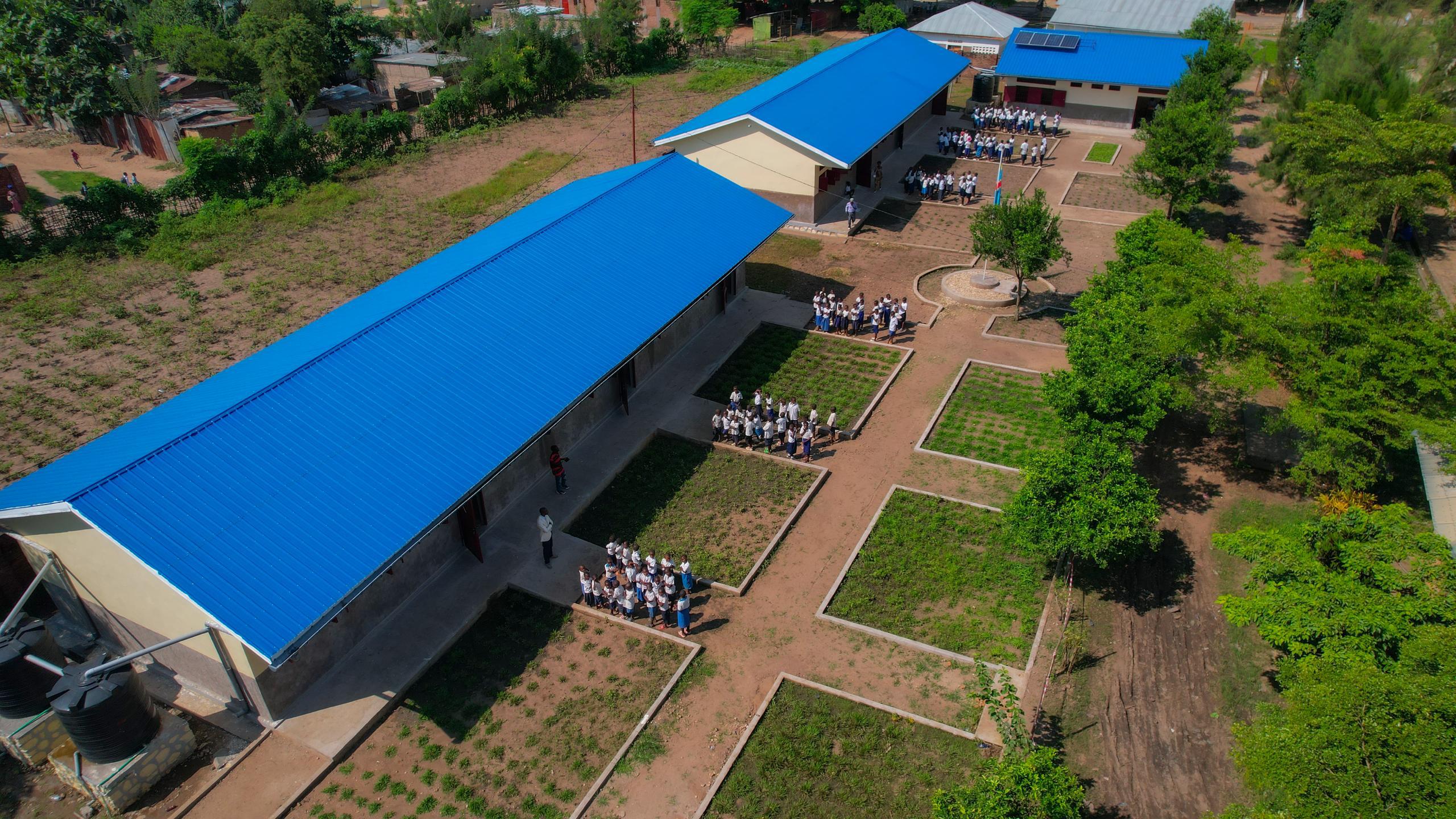Leveraging Africa’s domestic financing to reach those furthest behind
June 27, 2024

A new school built in DRC under the PDL 145T programme
“Previously, we were being transferred to health facilities in other places like Burundi but now we are happy to be treated in our own hospital”, noted Anastasie MATUMAINI, Head of Kiliba City in the Democratic Republic of Congo (DRC).
As echoed by Anastasie, the plight of people in underserved communities in most developing countries transcend borders. Most of these communities, particularly in rural areas, have limited access to essential social services such as education, health, transportation, and administrative services.

Anastasie MATUMAINI, Head of Kiliba City in DRC
“We were studying in bad conditions and learning under a straw structure. Today, we are happy to have a modern and well-equipped school”, elated Omar NASIBU, a pupil of Lomamba Primary School narrated.
For Omar and students in nearby communities, not having to close school early anytime the cloud gathers, is a great joy. Their dream of having a better learning environment became a reality when the Government of DRC decided to partner with the United Nations Development Programme (UNDP) on a local development program dedicated to the 145 territories (known by its French acronym as DRC – PDL 145T).

A health centre at Lomami in the Opala Province of DRC.
An Innovative Development Model
The community development model with a French acronym PUDC/PDL, is being implemented by UNDP with cost-shared financial support of targeted African Governments including DRC, Gabon, The Gambia, Liberia, Senegal, and Togo. The programmes under the initiative are largely funded by domestic resources of the African countries. Between 2010-2022, African domestic investments stood at $3,784 billion, largely surpassing overseas development assistance of $550 billion and foreign direct investments of $642 billion. Channeling the continent’s resources towards its development is restoring hope to many communities.
“This initiative of our Head of State truly restores our dignity”, said Malungisa Nsimba Reine, Director of Sacré Cœur Primary School in the Lodja in Sankuru Province, DRC.
The DRC programme (with about $610 million funding from the Government) , named “PDL-145T”, has so far provided 631 critical infrastructures including 334 primary schools, 245 health centers and 52 administrative buildings in nine provinces. The aim is to improve access to education, health, transportation, and essential administrative services for the populations in 54 territories that UNDP is supporting.
“The PDL 145 Territories initiative is a testament of President Félix TSHISEKEDI’s commitment to building a new DRC”, noted Iddissa MANGALA, Governor of Maniema Province during the handing-over ceremony of schools.
Upscaling a Model of Impact
The PDL-145T success in DRC falls within the innovative development model adopted by UNDP, building on similar results from Senegal which started in 2015. The goal of the PUDC/ PDL is to transform the lives of rural populations and reduce rural-urban inequalities, using domestic financing.
In the pioneering country Senegal, through the interventions, several communities benefited from social services. These include over 600,000 people gaining access to clean water and more than 830,000 people in Senegal having access to energy.
“The Community Development Emergency Programme is a priority and an emergency for the Head of State and the entire Senegalese people. This put special emphasis on the satisfaction of basic social needs as an essential factor in promoting sustainable human development”, noted Mahammed Boun Abdallah Dionne, Former Prime Minister of Senegal.
Agriculture, which is the economic backbone of most African countries, was not left out under the PUDC interventions. In The Gambia for instance, in addition to health, education, and transportation services, farmers like Momodou Joof in the Kerr Wally community express joy over receiving agriculture equipment under the initiative. "It has been a journey of transformation, and our village has witnessed the power of unity”.

Under the PUDC programme, tractors were provided for communities to facilitate farming activities in The Gambia.
Similarly, in Liberia, under the PUDC model, six counties received farming equipment including tractors, trailers, rice and cassava mills among other farming tools. The PUDC programme also provided other social services including ambulances to the Ministry of Health (MoH) for use by beneficiary communities.

New ambulances for Ministry of Health under the PUDC programme in Liberia.
In Togo, key results from the PUDC programme include establishment of 16 health centers and provision of mobile clinics that provide quality healthcare to over 500,000 people per year. The programme also supported the construction of markets, and improved communities’ access to energy including solar-power and improved road transportation, which is facilitating business operations.
"The Government has given us hope with PUDC”, Komla Seydou, an entrepreneur in Togo noted.
Inspired by this innovative model of partnerships, Governments across Africa are increasingly embracing cost-sharing schemes to drive national development priorities. Gabon’s $200 million partnership with UNDP to accelerate local development is the latest example to improve access to water, sanitation, health, and education for marginalized communities.
These partnerships reflect trust in UNDP’s capacity to deliver transformative change and set the stage for scalable, sustainable development solutions across the continent.

Mobile clinics provided in under served communities in Togo.
Domestic resource mobilization is crucial for achieving the Sustainable Development Goals (SDGs) in Africa, as this provides a stable and sustainable source of financing for development interventions. The PUDC/PDL model, which puts stronger emphasis on domestic financing, signifies not just a shift in approach, but a dynamic leap toward achieving the SDGs to leave no one behind. The success and benefit of the interventions call for more of such governments partnerships to address the real needs of underserved communities towards an inclusive and sustainable future for all.
###
For media enquiry, please contact praise.nutakor@undp.org - Partnerships and Communications Specialist, UNDP Africa

 Locations
Locations




